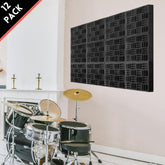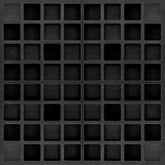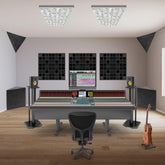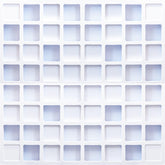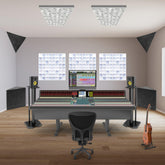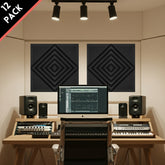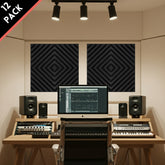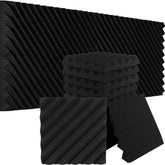Guide to accurately use the microphone pre-amp
Guide to accurately use the microphone pre-amp
Microphone Pre-Amp, which is commonly found in mixers and audio interfaces, is very familiar to most musicians, but it is very rare to accurately grasp and use its purpose and principle.
In this article, we will learn more about the exact purpose and principle of using the microphone pre-amp, as well as the confusing concepts such as Class-A, vacuum tubes, transformers, and discrete, and provide guidelines for selecting and utilizing the best microphone pre-amp!
1. The purpose of the Microphone Pre-Amplifier
The Pro-Line Level, which most professional audio devices use as a reference when sending and receiving signals, including A/D converters that act as recorders in modern digital recording, is +4dBu, but usually, the level of microphones is much lower than this. A device that pre-amplifies these microlevels to "Pre" and switches them to Pro-Line Levels (reference level: +4dBu) that can be used in professional audio devices is called "Microphone Pre-Amplifier".
For example, if you add a gain of 54 dB to a signal that was being output around -50 dB from the microphone, the signal will reach a level around +4 dBu, which most professional audio devices use as a reference level. Adding such an appropriate gain is the main purpose of using a microphone pre-amp.
The maximum gain that the microphone pre-amp can produce varies from device to device and is usually between 55 dB and 70 dB. Condenser microphones with relatively high power levels generally do not require high gain, but dynamic microphones with relatively low power levels (especially ribbon microphones) may require very high gain (some cases 70 dB or more).

*Neve 1073 microphone pre amp
Recently, the Microphone pre-amp often has a built-in Direct Injection Box (hereinafter referred to as D.I) that converts the instrument level to the mic level. In addition, since the Instrument Level output from the guitar and bass has very high impedance and a signal is transmitted in the form of (Hi-Z) Un-balanced, it is switched to a Balanced signal of low impedance (Lo-Z) through the built-in D.I and then amplified to a Pro-Line Level before and after +4dBu.
In addition, Mic pre-amp often has various additional functions such as Pad, +48, Phase Invert, and High-Pass Filter. Pad is an input level attenuation device that can be conveniently used if the output level exceeds +4 dB even though the gain of the microphone prep is 0 dB because the input signal is too high (Kick, Snare, etc.). +48 is a button for supplying the voltage (+48 Volt) required by the microphone when using a condenser-type microphone, and the phase Invert is used to solve phase interference in case several microphones are used by inverting + and – phases of the signal. In addition, High-Pass Filters are generally used to cut audio signals below 60-80 Hz, which have a lot of unnecessary vibrations, but selectively carefully use them because the ultra-low-range sound may be damaged and the sound may be too light.
2. How do I set the appropriate microphone pre-amp gain?
Most professional audio devices use the Pro-Line level around +4dBu as a reference level. Therefore, the basic principle of using the gain of the microphone prep is to set the signal output from the microphone prep to be around +4dBu. Of course, in some cases, microphone pre-amp may be used for creative purposes, such as intentionally creating Over-Gain Distancing, but these techniques should be used for certain purposes with a full understanding of the basic principles.
There are two main ways to check the level being output from the microphone pre-amp. The first is to check the meter that the microphone pre-amp is equipped with, and a more reliable way is to check it in the meter of the DAW we use.
If the microphone pre-amp is equipped with a VU meter, you can easily check the corresponding dBu. Usually, 0dBvu = +4dBu in a VU meter, so if the VU meter raises the gain to the moving state around 0 on average, the output level of the microphone pre-amp is around +4dBu.

If the microphone pre-amp is not equipped with a meter or it is difficult to observe, the level can be checked through the meter on the DAW. The dB unit in digital is dBFs, and the dBFs value corresponding to +4 dBu varies depending on the audio interface (or independent A/D converter) specification being used. 0 dBFs are the greatest signal strength that can be expressed digitally, and the dBFs value corresponding to the Max Line Input level of the audio interface will soon be 0 dBFs.
(* Note: In a strict sense, dBu is not Peak Volts, so it cannot be simply calculated as Peak Level dBFs, but considering the digital environment where the absolute Clip Level exists, dBu is inevitably used in dBFs compatible with "Peak Meaning". )
For example, 0 dBFs = +20 dBu in Apogee Duet with a Max Line Input Level specification of 20 dBu, which will have a headroom of 16 dB (space between the reference level +4 dB from the Max Line Input Level). In this case, since -16 dBFs=+4 dBu from each value, the state in which the meter on the DAW is before and after -16 dBFs means that the level input through the A/D converter of the Apogee Duet is around +4 dBu. Therefore, when recording using the Apogee Duet audio interface, it is a basic principle to raise the gain of the microphone pre-amp until the meter on the DAW before and after -16 dBFs.

Apogee duet specs
On the other hand, 0 dBFs=+13 dBu from RME UFX with a Max Line Input Level of 13 dBu, and if 9 dB is subtracted from each value, -9 dBFs=+4 dBu, so the state before and after -9 dBFs on DAW is input through the A/D converter of RME UFX. Therefore, when recording using the RME UFX audio interface, it is a basic principle to raise the gain of the microphone pre-amp by the time the meter on the DAW is around -9 dBFs.
As such, meters (dBFs) displayed on DAW are concepts that are applied "relatively" according to the Max Line Input level of the audio interface being used, and the meter values on DAW corresponding to the reference level +4 dB targeted by Mic pre-amp are all different. Therefore, it is very important to identify the dBFs corresponding to +4 dBFs on the DAW by checking the Max Line Input Level (or 0 dBFs level @ +4 dBu Ref) of the audio interface before using the microphone pre-amp.
Most of the audio interfaces we use have extreme distortion as we approach the critical point (0 dBFs). Most of the distortion occurring in the converter is due to odd-harmonics, and this type of distortion is heard in the human ear with a very sharp and cold feeling. Therefore, if a signal significantly exceeding the reference level +4 dBu is input to the audio interface due to excessive gain, the unnatural sound is often recorded as if the Over-Drive effector was caught. There is no problem with the meter temporarily staying in the headroom space (space between +4 dBBu and 0 dBFs) for a short time, but if the signal is "continuous", special attention is needed as it feels particularly severe distortion.
3. Microphone pre-amp's Max Mic Input & Output Level.
The Max Mic Input Level of the microphone pre-amp (or audio interface with a built-in microphone pre-amp) means the highest mic-level that the microphone pre-amp input stage can withstand. For example, if a microphone level of +10 dB is input to a microphone pre-amp with a Max Mic Input level of +6 dB (assuming there is no pad), significant distortion will already occur at the input stage of the microphone pre-amp. In this case, even if Gain is 0 dB, the sound that has already been distracted will be output from the input terminal, so even if there is enough headroom left on the DAW meter, significantly damaged sound can be recorded.
In addition, like all devices, the distortion increases as the microphone pre-amp input terminal approaches the maximum tolerable critical point (= Max Mic Input Level). If this distortion is "intentionally" used, it can be called creative sound, but if it is not, it will be a form of sound that must be avoided. The biggest advantage of the microphone pre-amp with a high Max Mic Input level is that distortion can be minimized by forming these critical points very high.
For example, FMR Audio's RNP8380 microphone pre-amp with a Max Mic Input level of up to +28 dBu actually does not have a microphone with the corresponding Max Mic Output level, so it is actually free from distortion at the microphone pre-amp input terminal. There is almost no distortion even when entering a very high mic-level around +10 dBu. (Distortion: 0.0005% when entering +10dBu mic-level in RNP8380 Input)

FMR audio RNP8380
Conversely, the Max Line Output Level of the microphone pre-amp means the highest pro-line level that the microphone pre-amp output terminal can output. The high Max Line Output Level microphone pre-amp is particularly advantageous in live recording situations where large spaces are used because it can maintain a high level even in situations where signals are transmitted at very long distances of hundreds of meters.
-Ted Kim
ABOUT AUTHOR
House Live Engineer of Free Bird, a live house with the history of South Korea's indie music scene.
Single album/Regular album/Live recording, Mixing and Mastering experience of various rock and jazz musicians

